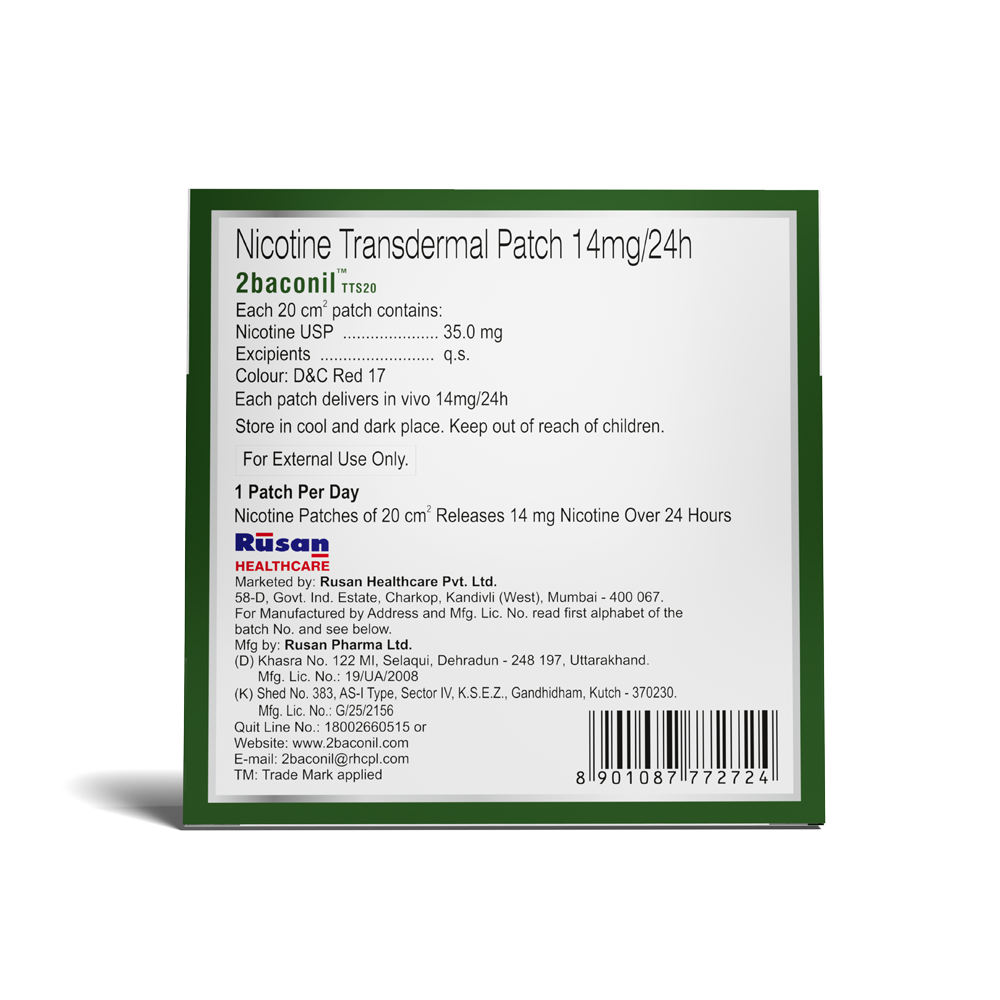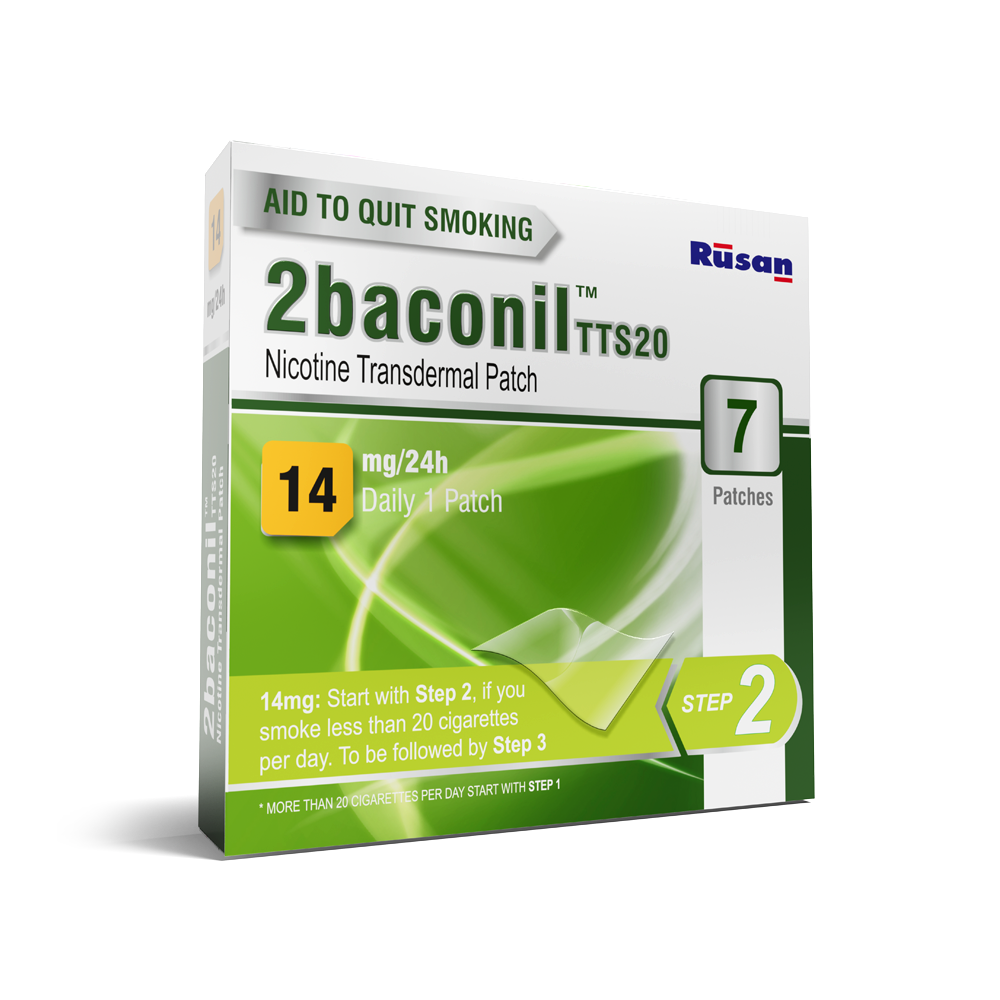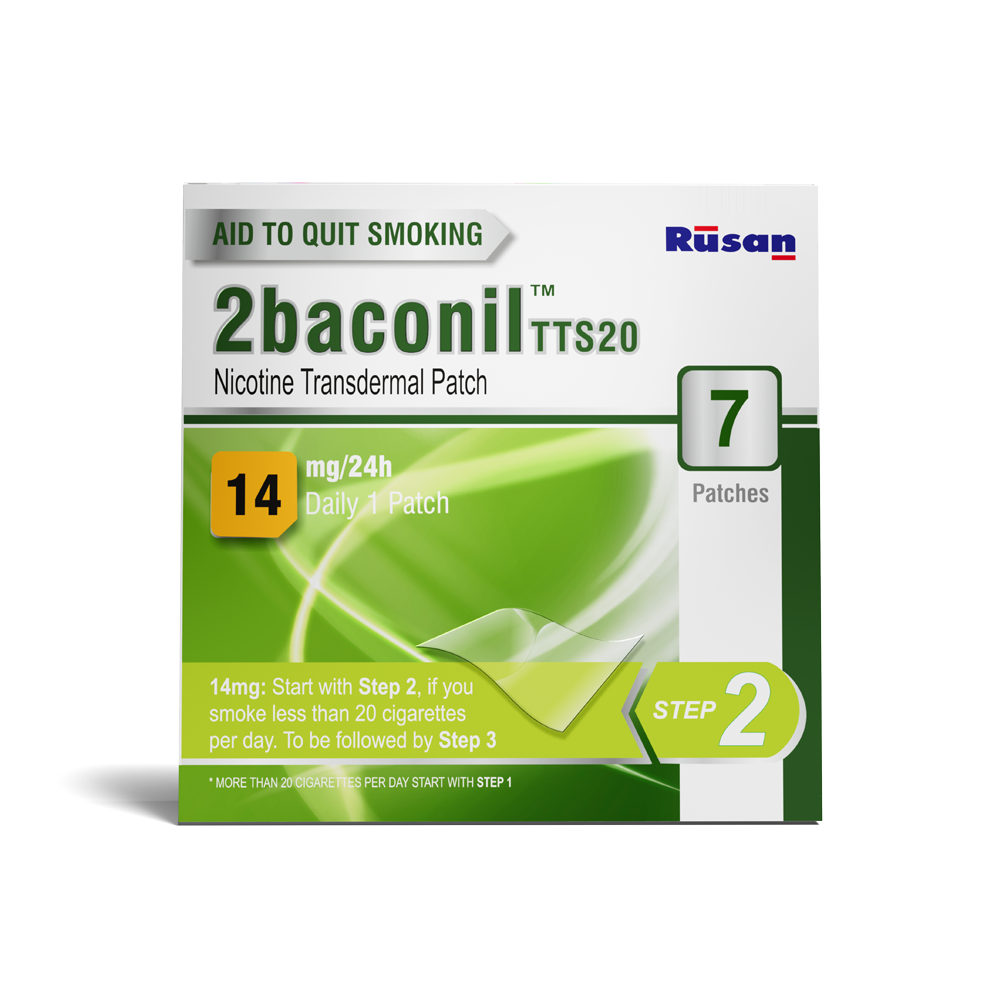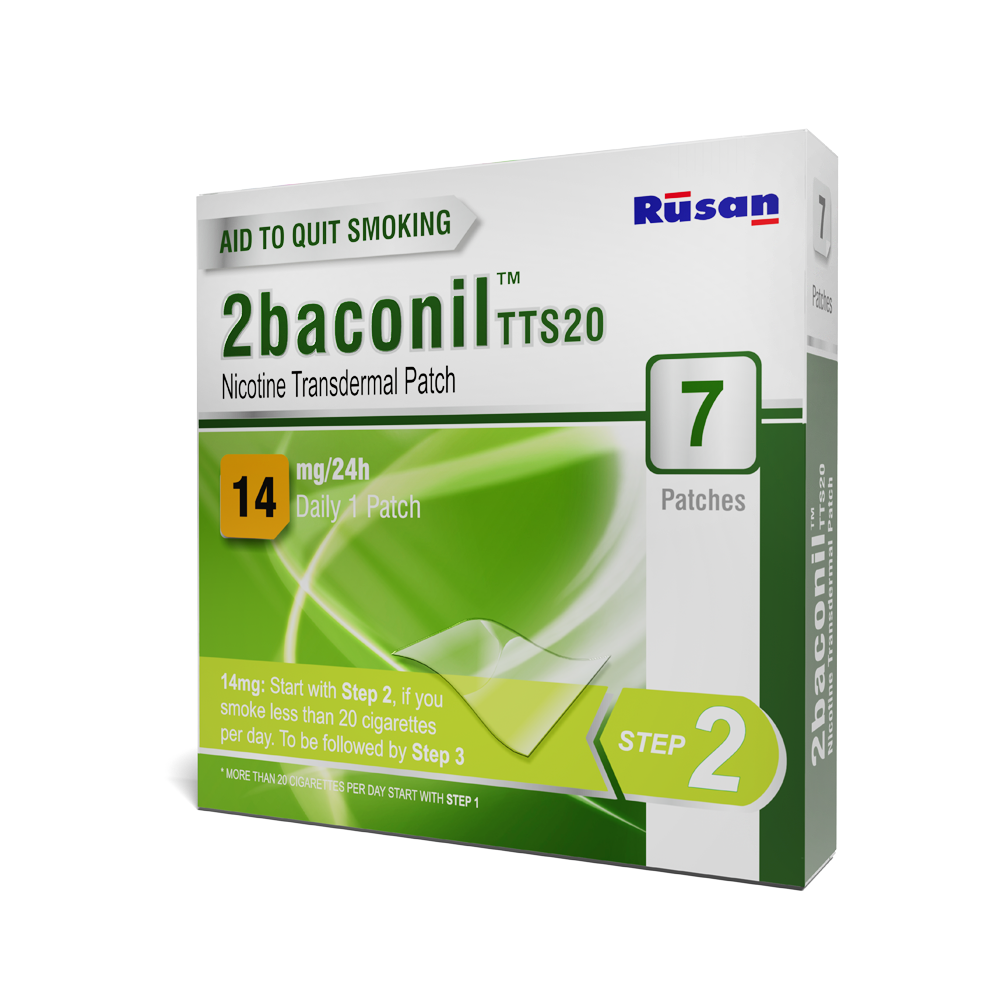2baconil TTS20 14 mg Nicotine Transdermal 24h Patch
MRP ₹825.5
(Inclusive of all Taxes)
₹123.8 Cashback (15%)




Available Offers
Therapeutic Class
Author Details
We provide you with authentic, trustworthy and relevant information
Drug-Drug Interactions Checker List
Drug-Drug Interactions
Drug-Drug Interactions
Login/Sign Up
The combined use of 2baconil TTS20 14mg Nicotine Transdermal 24h Patch and Fenofibrate can increase the blood levels and effects of 2baconil TTS20 14mg Nicotine Transdermal 24h Patch. This can increase the risk or severity of side effects.
How to manage the interaction:
Co-administration of 2baconil TTS20 14mg Nicotine Transdermal 24h Patch and Fenofibrate can lead to an interaction, it can be taken if advised by a doctor. If you experience any symptoms like irritation and burning sensation in the mouth and throat, increased salivation, nausea, abdominal pain, vomiting and diarrhea, contact a doctor immediately. Do not discontinue any medications without consulting the doctor.
Co-administration of 2baconil TTS20 14mg Nicotine Transdermal 24h Patch and Methysergide can increase the effects of dihydroergotamine and increase the risk or severity of high blood pressure.
How to manage the interaction:
Co-administration of 2baconil TTS20 14mg Nicotine Transdermal 24h Patch and Methysergide can lead to an interaction, it can be taken if advised by your doctor. However, if you experience any symptoms like coldness, paleness, discoloration, numbness, tingling, or pain in your hands or feet; muscle pain or weakness; severe or worsening headache; blurred vision; severe abdominal pain; chest pain; or shortness of breath, contact your doctor immediately. Do not discontinue any medications without first consulting your doctor.
Co-administration of 2baconil TTS20 14mg Nicotine Transdermal 24h Patch and Dihydroergotamine can increase the effects of dihydroergotamine and increase the risk of high blood pressure.
How to manage the interaction:
Co-administration of 2baconil TTS20 14mg Nicotine Transdermal 24h Patch and Dihydroergotamine can lead to an interaction, it can be taken if advised by your doctor. However, if you experience any symptoms like coldness, paleness, discoloration, numbness, tingling, or pain in your hands or feet; muscle pain or weakness; severe or worsening headache; blurred vision; severe abdominal pain; chest pain; or shortness of breath, contact your doctor immediately. Do not discontinue any medications without first consulting your doctor.
Combining 2baconil TTS20 14mg Nicotine Transdermal 24h Patch with Famotidine may reduce the clearance of 2baconil TTS20 14mg Nicotine Transdermal 24h Patch.
How to manage the interaction:
Although taking Famotidine and 2baconil TTS20 14mg Nicotine Transdermal 24h Patch together can cause an interaction, it can be taken if your doctor has suggested it. Do not stop using any medications without a doctor's advice.
Coadministration of 2baconil TTS20 14mg Nicotine Transdermal 24h Patch and Hydroxyprogesterone may reduce the blood levels and effects of 2baconil TTS20 14mg Nicotine Transdermal 24h Patch.
How to manage the interaction:
Using 2baconil TTS20 14mg Nicotine Transdermal 24h Patch and Hydroxyprogesterone together can lead to an interaction, they can be taken if advised by your doctor. Consult your doctor if your symptoms do not improve or worsen. Do not stop using any medications without a doctor's advice.
Drug-Food Interactions
Drug-Food Interactions
Login/Sign Up
Drug-Diseases Interactions
Drug-Diseases Interactions
Login/Sign Up
Drug Warnings
Side Effects of 2baconil TTS20 14 mg Nicotine Transdermal 24h Patch
Directions for Use
Medicinal Benefits Mweb
Key Benefits
Uses of 2baconil TTS20 14 mg Nicotine Transdermal 24h Patch
About 2baconil TTS20 14 mg Nicotine Transdermal 24h Patch




Online payment accepted
know your delivery time
Provide Delivery Location
Author Details
We provide you with authentic, trustworthy and relevant information
Therapeutic Class
All Substitutes & Brand Comparisons
RX
Nicotouch 14 mg/24 Hr Nicotine Transdermal Patch 7's
Sparsha Pharma International Pvt Ltd
₹660
(₹94.29 per unit)
86% CHEAPERRX
Nicogum Transdermal 14 mg Patch 7's
Cipla Health Ltd
₹699
(₹99.86 per unit)
85% CHEAPER

Have a query?
Verified Buyers Reviews
Side Effects
Buy best Poisoning & Drug Dependence products by
Cipla Ltd
Sun Pharmaceutical Industries Ltd
Troikaa Pharmaceuticals Ltd
Intas Pharmaceuticals Ltd
Samarth Life Sciences Pvt Ltd
Tripada Healthcare Pvt Ltd
Glenmark Pharmaceuticals Ltd
Itc Ltd
Lupin Ltd
Sparsha Pharma International Pvt Ltd
Celon Laboratories Pvt Ltd
Consern Pharma Ltd
D D Pharmaceuticals Pvt Ltd
Fusion Health Care Pvt Ltd
Harson Laboratories
Msn Laboratories Pvt Ltd
Neon Laboratories Ltd
Novartis India Ltd
Pfizer Ltd
Psyco Remedies Ltd
Wockhardt Ltd
Abeena Pharma
Aimcad Biotech Pvt Ltd
Arco Lifesciences (I) Pvt Ltd
Bharat Biotech
Brainwave Healthcare Pvt Ltd
Chandra Bhagat Pharma Ltd
Cipla Health Ltd
Cnx Health Care Pvt Ltd
Crescent Formulations Pvt Ltd
East India Pharmaceutical Works Ltd
Healers Pharmaceuticals Pvt Ltd
Icon Life Sciences
K C Laboratories
Koye Pharmaceuticals Pvt Ltd
Leeford Healthcare Ltd
Lyf Healthcare
Micro Labs Ltd
Natco Pharma Ltd
Ns Pharma
Ozone Pharmaceuticals Ltd
Steris Healthcare
TTK Healthcare Ltd
Theo Pharma Pvt Ltd
Treatsure Pharma
West Coast Pharmaceuticals Pvt Ltd







